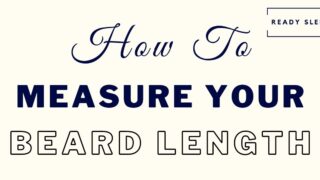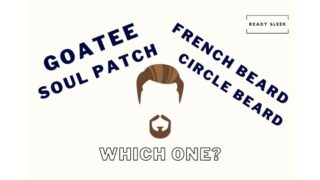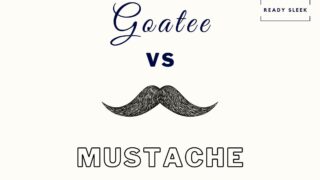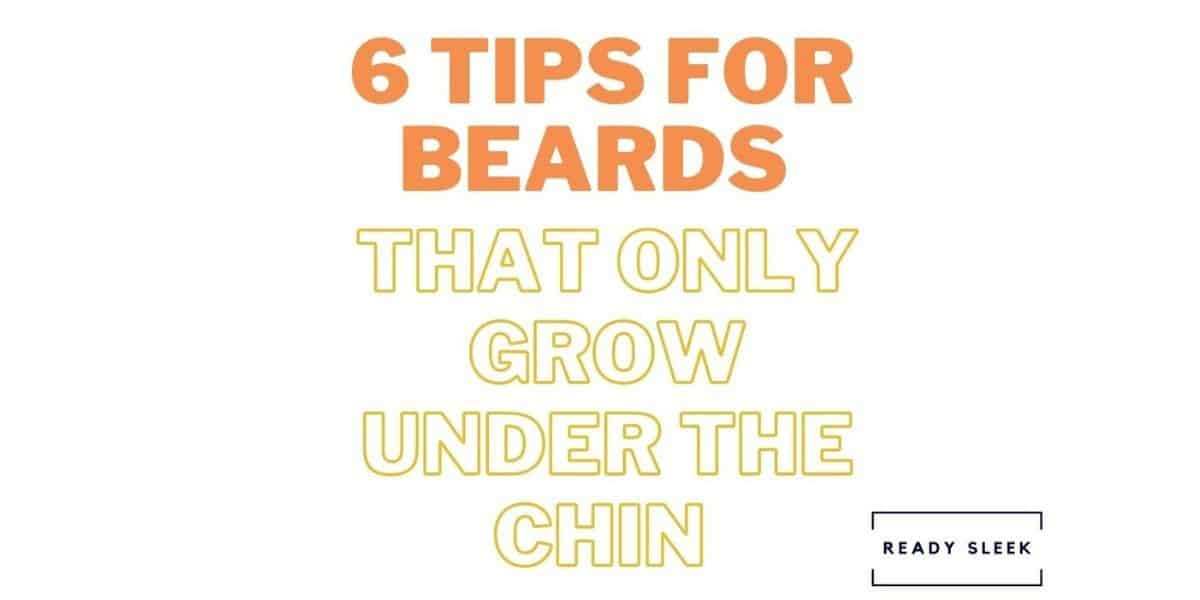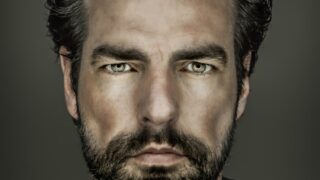Beard dyeing is becoming increasingly popular. It’s no secret. Gray hairs scattered across a glorious mane of facial hair are a tell-tale sign of a man’s age. But a common question people ask is, can you use hair dye on beards?
While hair dyes and beard dyes often contain similar ingredients, using hair dye on beards is generally not recommended due to facial skin’s sensitivity and beard hair’s coarseness. Using a dye specifically designed for facial hair would give you a better result.
Let’s dig deeper.
Disclaimer – Any decision to dye your beard with hair dye should be discussed with a professional to determine its suitability for your specific circumstances.
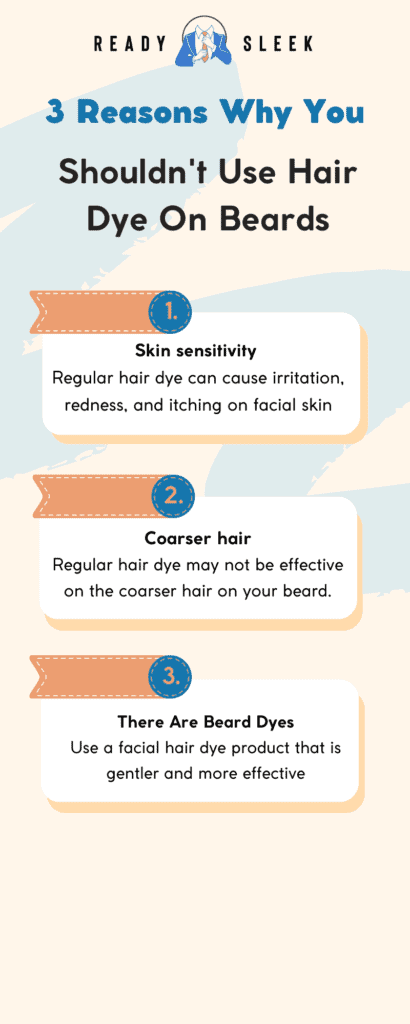
3 Reasons Why You Shouldn’t Use Hair Dye On Your Beard
Here are some key reasons why it’s not usually worth doing.
1. Sensitivity
Facial skin is more sensitive than scalp skin. The ingredients used in hair dye can be harsh and irritating to the delicate skin of the face.
In contrast, scalp skin is tough and the ingredients used in hair dyes usually take this into account. They weren’t designed with facial hair in mind.
2. Coarser Hair
Beard hair is coarser and thicker than scalp hair. This means that it will inevitably require a different type of dye or a longer processing time.
Regular hair dye probably won’t be as effective in coloring beard hair evenly. It may not even penetrate the hair shaft properly.
What you’re left with is patchy or uneven color which is often difficult to correct, depending on how permanent the dye solution you’ve gone for is.
3. There Are Better Dyes Available
There are literally products specifically designed for beard dyeing.
They’re usually formulated to be less harsh and more mindful of skin sensitivity.
Beard dyes also take the coarseness of facial hair into account, often giving you a more even and natural finish as a result.
Fortunately, beard dyes are becoming more commonly available and can currently be found in a wide range of colors.
Given how important the difference between hair dye and beard dye is here, I wanted to dive deeper into the subtopic.
Hair Dye Vs Beard Dye: What’s The Difference?
While hair dye and beard dye can sometimes contain similar ingredients, there are often key differences in their formulation and intended use. Hair dye is designed for fine scalp hair, while beard dye is designed for coarse facial hair.
Beard dye should be specifically formulated for use on facial hair. It’s more likely to contain ingredients such as henna or indigo. They’re less harsh than what’s often found in hair dye and are more effective on coarse beard hair.
In addition to the ingredients, beard dye often comes in a wider range of colors, making it easier to match your facial hair to your scalp hair.
Another important difference between dyes that call themselves “hair dye” and those that call themselves “beard dye” is the packaging. Beard dyes often come with an applicator brush, whereas hair dyes often don’t.
Hair dyes are often lathered in while showering, while beard dyes are usually brushed in.
An applicator brush is essential when it comes to applying beard dye, simply because of how thick and coarse the hair can be.
While beard dyes are more likely to contain natural ingredients, it’s important to note that they can still contain potentially irritating ingredients such as PPD.
Finally, no matter what dye you choose to use, be sure to do a patch test before using any new hair or beard dye product.
All reputable products usually have their own instructions for performing a proper patch test prior to application.
Is Scalp Hair Different From Beard Hair?
This isn’t health advice, but yes, it is. You may have noticed that your scalp hair has been visible and present since childhood. On the other hand, beard hair started to sprout once you hit puberty.
Basically, that facial hair was present even in childhood, but in the form of extremely thin, practically invisible vellus hairs.
Once you hit puberty, that vellus hair transforms into the thick, androgenic hair you see in the mirror today.
Androgenic hair is thicker and coarser than scalp hair.
Another difference between scalp hair and beard hair is what’s underneath it. The scalp is tougher than facial skin. Facial skin is sensitive.
Because of this, the effects of dye can be harsher on the face than on the scalp.
A Beard Dye Recommendation
Simpler Hair Color.
It uses gentle ingredients and avoids PPD as well as ammonia. It produces a sleek finish in a wide variety of colors.
If you’re interested, check out their most popular product – The Color Box – by clicking here. It’s great value for the number of dyes you get out of one purchase.
Another option that prides itself on being natural and organic is the Grizzly Mountain Beard Dye (
Ultimately, there are options.
Frequently Asked Questions
Let’s finish up with a couple of FAQs.
Can You Use Women’s Hair Dye On Your Beard?
Using women’s hair dye on your beard is not recommended. Much like men’s hair dye, women’s hair dye is designed for use on scalp hair, which is typically finer and less coarse than beard hair.
Can You Use Temporary Hair Dye On Your Beard?
While temporary hair dye is often less harsh than more permanent alternatives, it is still designed for scalp hair and is likely to be too harsh for use on facial hair. In addition, temporary hair dye is even less likely to be effective in coloring coarse beard hair.
The color is unlikely to penetrate the hair shaft properly, resulting in an uneven finish.
Ready Sleek founder. Obsessed with casual style and the minimalist approach to building a highly functional wardrobe. Also a fan of classic, vintage hairstyles.

![Can You Use Hair Dye On Your Beard? [Solved]](https://www.readysleek.com/wp-content/uploads/2023/03/Featured-Image-Sample-44-728x410.png)
